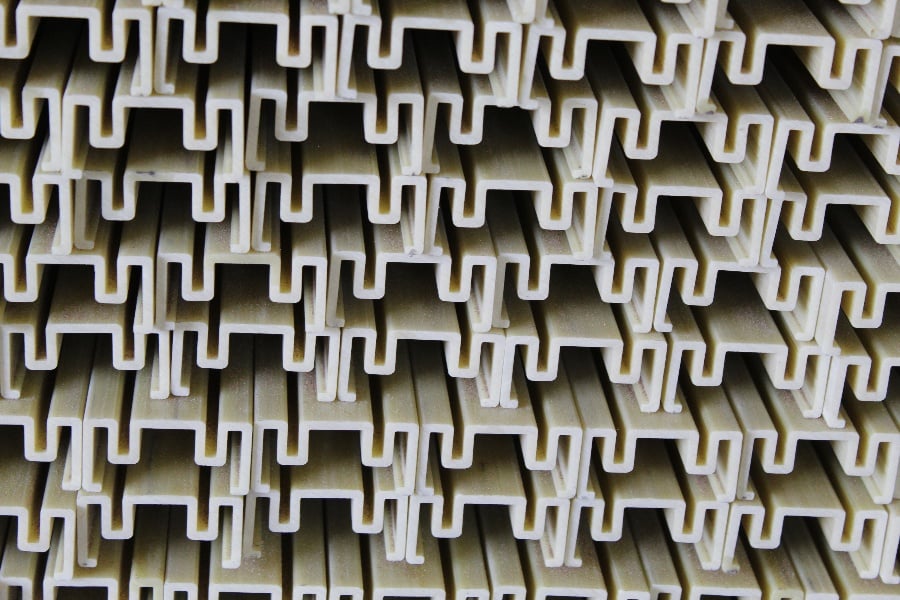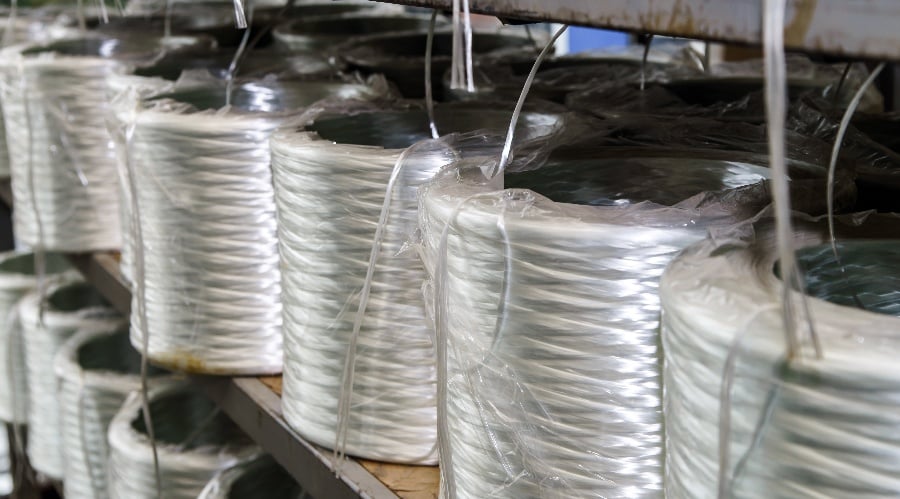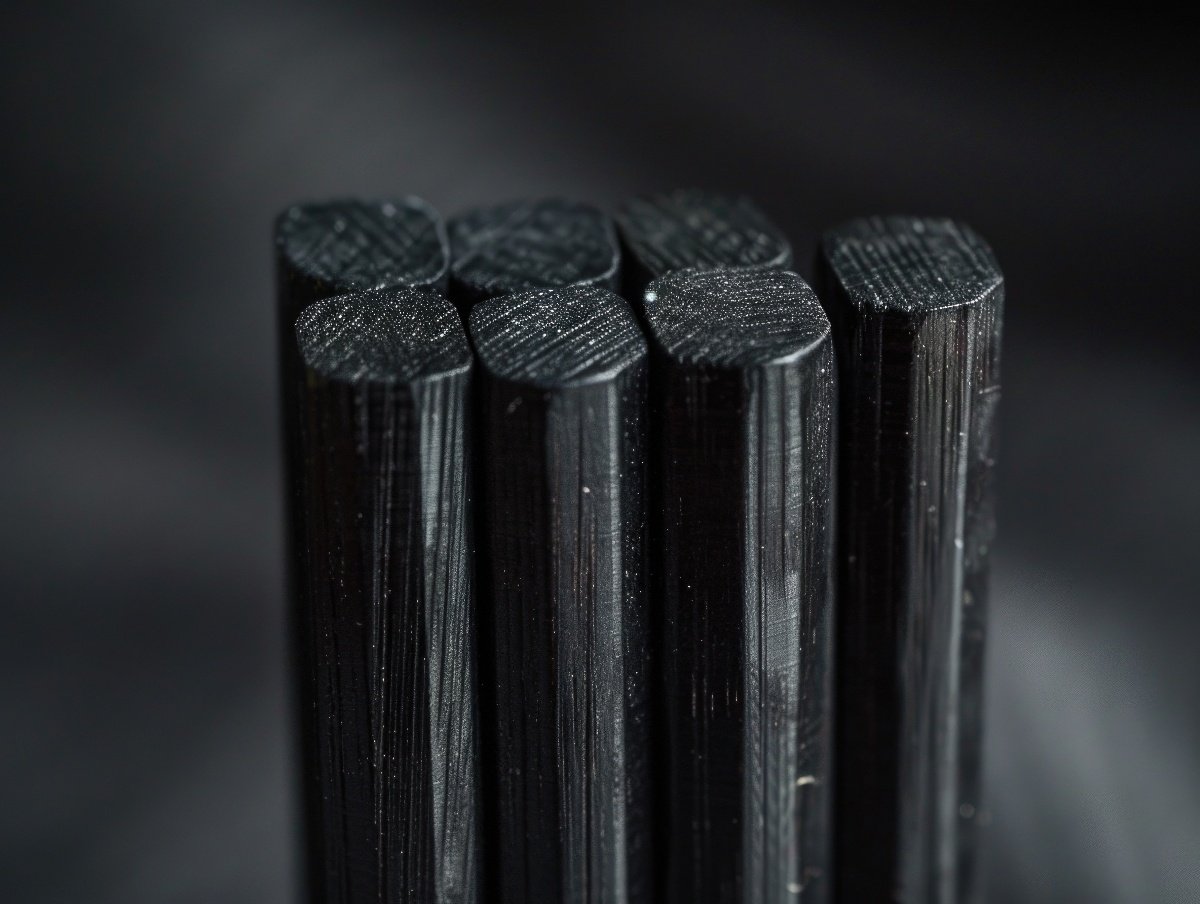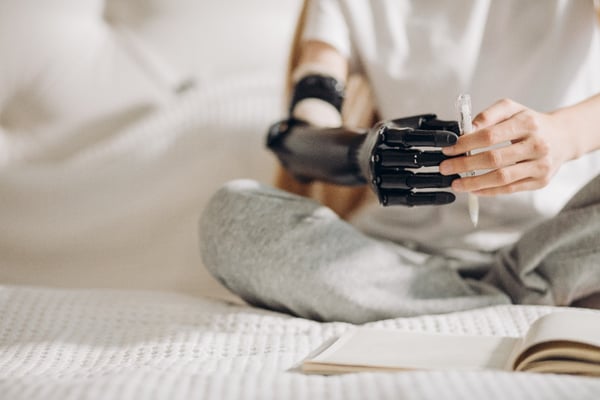
Once thought to be a thing of science fiction, bionic body parts have made their way out of the imaginations of writers and filmmakers and into the real world.
With the help of institutions like the Michigan State University Biomechanical Design Research Lab, components like carbon fiber hands have become a reality for athletes in need of physical therapy.
Using Fiber Reinforced Polymer (FRP) composite materials, these bionic hands are comprised of carbon fiber rovings that have been cured with epoxy resin via the pultrusion process.
Let’s take a closer look at the newest wave of biomechanics engineering.
Bringing Back the Game
Video Credit: Michigan State University
One of the biggest fears of any athlete is sustaining an injury, and it is something they are faced with every time they play a sport. Being benched due to a broken wrist can be career-changing.
That’s why when MSU basketball player, Nick Ward, fractured his wrist, the university set out to use a new bionic hand to get him back into the game as quickly as possible.
After sustaining a fractured wrist, the team’s basketball trainer turned to the Michigan State University's College of Engineering for assistance. With the help of both professors and students, the engineers quickly got to work by scanning Ward’s hand to generate a 3D model.
They also performed stress tests to determine how much force is caused by various basketball moves such as shooting, dribbling, and even passing the ball.
Once all of the data was collected, the team brought in FRP composites experts as well as experts from the university’s Center for Coatings and Diamond Technologies. Using carbon fiber and epoxy resin, the coalition fabricated a bionic hand brace that could withstand the stress of playing basketball.
With the Big 10 tournament just a few days away, the team was able to create the bionic hand four days ahead of schedule. The injured basketball player was able to practice for two days before he was put back into the game for the Big 10 tournament.
Combining FRP Composites with Biomechanical Engineering
This incident is not the only time when FRP composites have been used to build apparatus. Bionic braces have been used numerous times to help animals, athletes, paraplegics, and workers.
Three-legged dogs or animals with arthritis have been able to live normal lives with the help of artificial legs made from FRP composites. The prosthetic is slipped over the residual limb, and a blade is screwed in place to serve as the leg. Located at the bottom of the blade is a plastic paw with a non-slip sole for safety.
Oscar Pistorius became the first-ever amputee track athlete to compete in the Olympics. J-shaped carbon-fiber limbs were fabricated specifically for Pistorius, allowing him to do what was once thought to be impossible.
The J curve was designed to absorb impact similar to how the ankles, knees, hips, and lower back absorb the impact of running.
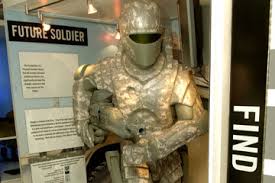
Pic Credit: science.howstuffworks.com
Another example of FRP composite biomechanics is the invention of wearable robotics. Used to reduce the strain on the backs of laborers and also in the medical field, the invention of bionic exoskeletons has made quite a significant impact on the world.
These wearables can even be used in the military to help reduce the strain of carrying such heavy equipment and gear.
Benefits of Wearable FRP Composites
While we have mentioned the various ways FRP composites can be used in creating bionic wearables, we haven’t talked about why yet. The benefits of FRP composites are almost endless.
Not only are they lightweight and durable, they are also resistant to moisture, heat, electricity, impact, and so much more.
Compared to metals like steel and aluminum, fiberglass and carbon fiber pultruded products have a major edge. Let’s look at why that is.
Steel is a widely used hard metal that is very strong. However, it is incredibly heavy, slick, and susceptible to corrosion, heat, and electricity. It is a conductive metal that would not be a good component to have in wearable robotics.
Even the smallest steel components would weigh the wearable apparatus down too much. You can forget about competing in the Olympics with steel.
Furthermore, it will begin to degrade if it comes into contact with water. Corrosion can quickly set in, which leads to rust damage that will compromise the integrity of the wearable.
As for aluminum, it is lighter than steel, and it will not rust. However, it is still too heavy to be used throughout an entire wearable apparatus. It is not uncommon to see aluminum used in conjunction with FRP composites, though.
This is generally done to keep the cost of the product down so that more people can afford it.
FRP Composite Profiles
Extremely lightweight and versatile, fiberglass and carbon fiber products can be used for just about anything. Molded into bars, tubes, rods, angles, and more, you can incorporate fiberglass into many different applications.
Here at Tencom, we can create a variety of fiberglass and carbon fiber pultrusions. Our special manufacturing process starts by bundling fiber rovings together and then pulling them through a liquid resin bath.
At this point in the pultrusion process, the material can be injected with specialty resins to enhance resistance to fire or to improve the product’s overall strength. Pigments may also be added before the curing process begins to achieve a specific pattern or color.
Once everything has been added into the mix, the product is then pulled into casting and cured. This molding process is where the FRP composite profile gets its shape. After the curing process is complete, the product will be ready to ship.
Other customizations that we can take care of for you include cutting and pre-drilling. If you are using the FRP composite products for building purposes, allowing us to pre-cut pieces and pre-drill holes will enable more expedient assembly.
If you would like to get a quote for your next project or learn more about our fiberglass profiles, get in touch with our experts today.





